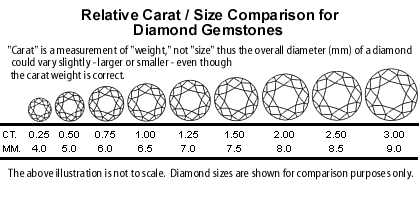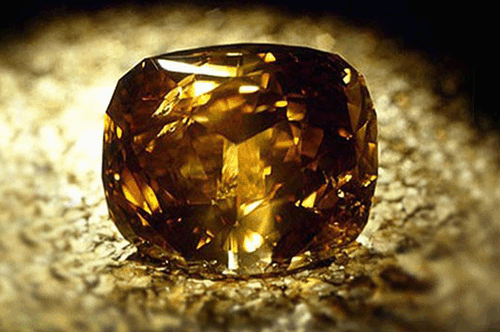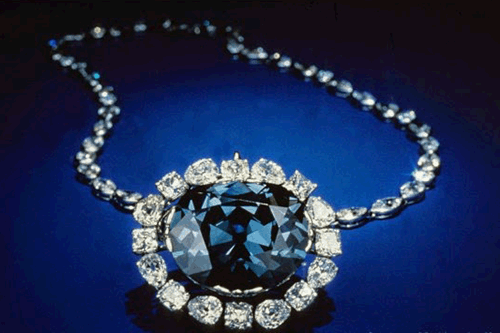The cut (and shape) of a diamond is the fourth major characteristic used in determining its value. It is perhaps the most important one of all because it determines the diamond's overall brilliance and vibrancy.
Usually, the cut of the diamond is associated with the shape of the diamond. Although the "cut" can describe the shape and facetting pattern of the diamond, it also describes the accuracy of the facetting and the proportion of the stone, as
well as the polish or surface finish of the diamond.
The cut influences the amount of light reflected and refracted back out of the diamond to the eye of the observer, and that determines the diamond's brilliance and as a result, its value.
The Belgian mathematician, Marcel Tolkowski, determined the optimum proportions or "ideal cut" for round diamonds. His formula indicates that the proper diameter size for a 1.00 carat weight diamond should be between 6.3 to 6.5 mm.
The Size to Weight Ratio Chart illustrates his optimum diameter for various carat weight gemstones:

The remaining dimensions for "Total Depth," "Table Width," "Girdle Thickness," "Crown Height," "and "Pavillion Height" can be determined by using the GIA "Ideal to Very Fine Cut" proportion standards shown in the following illustration.
The standards adhere to Tolkowsky's "Ideal" specifications but with some tolerance built in:








